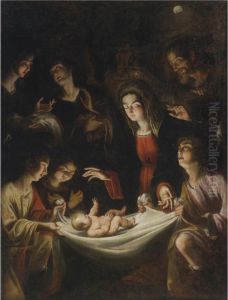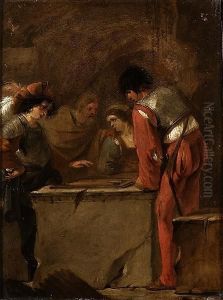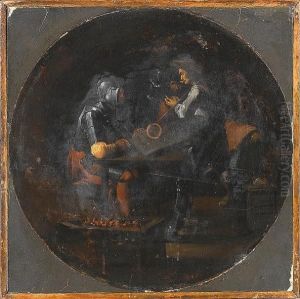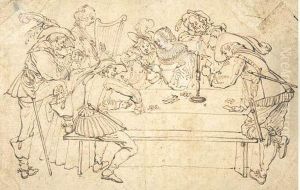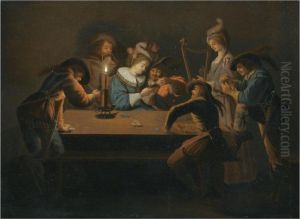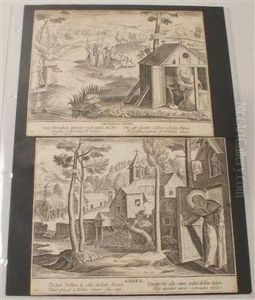Jean Le Clerc Paintings
Jean Le Clerc, also known as Jean LeClerc or Jean Cléret, was a notable figure in the world of European art during the late Renaissance and early Baroque periods. Born in 1587 in Nancy, a region that was then part of the Duchy of Lorraine and now in France, Le Clerc's artistic journey began in an era rich with cultural and artistic evolution. His work primarily spanned the early 17th century, a time when Europe was witnessing a transition from the ornate and complex designs of the Renaissance to the more dynamic and emotional expressions of the Baroque.
Le Clerc was not only a painter but also an engraver, illustrating the versatility of artists in this period who often mastered multiple mediums. His engravings and paintings showed a keen eye for detail and a profound ability to capture the essence of his subjects, traits that were highly valued in the artistic community of his time. Though the specifics of his training are not well-documented, it is believed that he was influenced by both local and international artists, reflecting the interconnected nature of European art during this period.
Throughout his career, Jean Le Clerc worked on various religious and secular commissions, which was typical for artists of his time. His religious works often depicted scenes from the Bible, imbued with a sense of drama and emotion that was becoming increasingly popular. On the other hand, his secular works included portraits and scenes of daily life, showcasing his versatility and keen observation.
Despite his contributions to the art world, Jean Le Clerc remains a somewhat obscure figure, overshadowed by his contemporaries. However, his work continues to be studied by art historians who appreciate his technique and the subtle ways in which he contributed to the transitions in European art. Jean Le Clerc passed away in 1633 in Nancy, leaving behind a body of work that, while not as widely recognized as that of some of his peers, offers valuable insight into the artistic transitions of his time.
